
Klezmer is an instrumental musical tradition of the Ashkenazi Jews of Central and Eastern Europe. The essential elements of the tradition include dance tunes, ritual melodies, and virtuosic improvisations played for listening; these would have been played at weddings and other social functions. The musical genre—also sometimes known by the earlier term freilach music —incorporated elements of many other musical genres including Ottoman music, Baroque music, German and Slavic folk dances, and religious Jewish music. As the music arrived in the United States, it lost some of its traditional ritual elements and adopted elements of American big band and popular music. Among the European-born klezmers who popularized the genre in the United States in the 1910s and 1920s were Dave Tarras and Naftule Brandwein; they were followed by American-born musicians such as Max Epstein, Sid Beckerman and Ray Musiker.

Joseph Moskowitz was a Romanian-born American cimbalom player, composer, restaurant owner and recording artist in New York City during the first half of the twentieth century. A descendant of a family of klezmer musicians, he was among the most well-known American cimbalom players of his time, and had a wide repertoire which included not only Jewish music but also Romanian, classical, and ragtime music. He is thought to have composed over 100 cimbalom pieces which drew upon various musical influences. His restaurant Moskowitz & Lupowitz, on Second Avenue also became a popular destination and celebrity hangout in the 1920s and 1930s.
The Broderzinger or Broder singers, from Brody in Ukraine, were Jewish itinerant performers in Austrian Galicia, Romania, and Russia, professional or semiprofessional songwriters and performers, who from at least the early 19th century sang and danced, often in comic disguises, and who performed short one-act plays. They were often badchonim and meshorerim. They were among the first to publicly perform Yiddish-language songs outside of Purim plays and wedding parties, and were an important precursor to Yiddish theatre. They erected miniature stages and entertained customers in taverns, wine cellars, and restaurant gardens.
Henry "Hank" Sapoznik is an American author, record and radio producer and performer of traditional Yiddish and American music.
Yetta Zwerling Silverman was a Yiddish movie star during the 1930s and 1940s.

Abraham "Abe" Elenkrig was a Russian-born American klezmer bandleader, Cornet player, barber and recording artist of the early twentieth century. He was among the earliest bandleaders to record klezmer music in the United States, making a series of discs for Victor Recording Company and Columbia Records from 1913 to 1915. In 2009, the Library of Congress named his 1913 recording Fon der Choope to the National Recording Registry.
Shloimke Beckerman also known as Samuel Beckerman, was a klezmer clarinetist and bandleader in New York City in the early twentieth century; he was a contemporary of Dave Tarras and Naftule Brandwein. He was the father of Sid Beckerman, also a klezmer bandleader.
Shloyme Prizament (1889-1973), Jewish composer, actor in the Yiddish theater, and badkhn, son of Moyshe Prizament.

Pepi Litman was a cross-dressing female Yiddish vaudeville singer associated with the Broderzinger movement. Litman led a popular traveling theater troupe around Europe, performing highly satirical songs while costumed as a male Hasidic jew. Because she frequently performed costumed as a young boy or as a male dandy, she is considered a proto-drag king performer. Pepi Litman made numerous 78rpm recordings which capture her energetic and virtuosic singing style, and which also stand as a document of Jewish life in Eastern Europe.
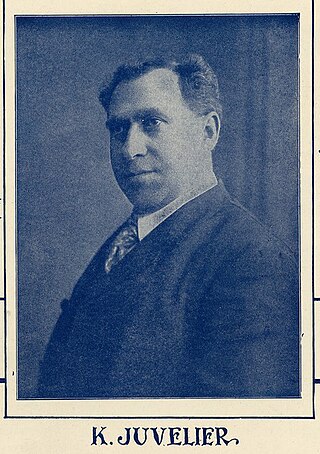
Kalman Juvelier was an Austrian-born Yiddish theatre actor and manager, Broder singer, Tenor, and recording artist of the late nineteenth and early twentieth centuries, who was active both in Europe and the United States. After emigrating to the United States in 1900, he became a key figure in the Yiddish theatre in New York, working with such notables as Boris Thomashefsky, David Kessler, Bertha Kalich and Jacob P. Adler and was director of the Hebrew Actor's Union as well as the Jewish Theatrical Alliance. From roughly 1905 to 1918, he recorded roughly 90 Yiddish language discs, mostly Yiddish theatre music, for most of the major record labels in the New York area.
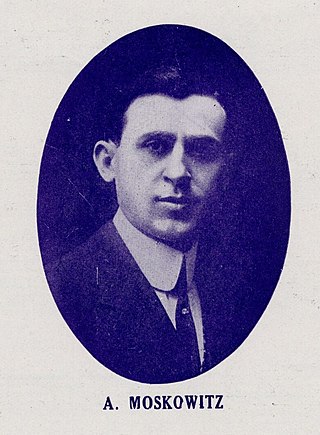
Abraham Moskowitz was a Yiddish language baritone and tenor, Yiddish theater actor and recording artist of the early twentieth century who recorded mainly between 1917 and 1927. His most successful recordings were made in collaboration with the klezmer bandleader and composer Abe Schwartz.

Israel J. Hochman was a Russian-born Jewish American violinist, klezmer bandleader, music arranger, and recording artist in early Twentieth Century New York City. He recorded prolifically for Edison Records, Emerson Records, Okeh Records, and Brunswick Records during the period of 1916 to 1924. He was one of a handful of bandleaders such as Abe Schwartz, Joseph Frankel and Max Leibowitz whose recordings are considered to make up the golden age of American klezmer.
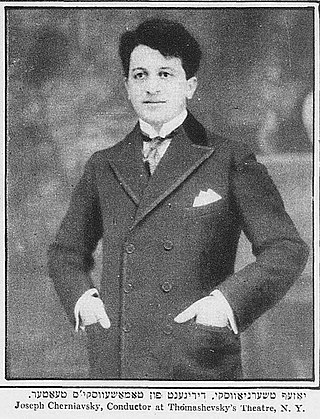
Joseph Cherniavsky was a Jewish American cellist, theatre and film composer, orchestra director, and recording artist. He wrote for the Yiddish theatre, made some of the earliest novelty recordings mixing American popular music, Jazz and klezmer in the mid-1920s, was also musical director at Universal Studios in 1928-1929, and had a long career in radio and musical theatre.
H. Steiner was a klezmer violinist who recorded for two discs of violin and cimbalom duets for the Gramophone Company in around 1909. Although he had a small musical output and his biography is mostly unknown, his recordings serve an important function for Klezmer revival musicians as they are rare examples of recorded European klezmer violin style.

Itzikl Kramtweiss or Krantweiss, also known by the anglicized name Isadore Krantweiss, was a Russian-born American klezmer musician and recording artist of the early twentieth century. He was leader of the Broder Kapelle, a popular klezmer orchestra in Philadelphia which made recordings for the Victor Recording Company in the late 1920s.

Abraham "Art" Shryer was a Russian-born American Klezmer cornetist, bandleader, and recording artist who was active in the New York City area in the 1920s and 1930s. In the late 1920s he recorded a number of Jewish and other Eastern European music sides for Brunswick Records, Vocalion Records, and Victor Records.
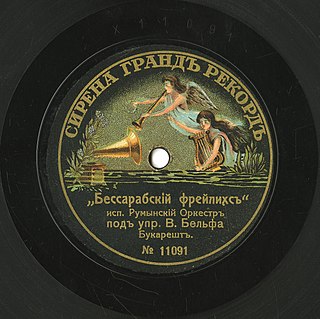
Belf's Romanian Orchestra was a Jewish music recording ensemble from the Russian Empire. Although little is known about them, their numerous recordings for Syrena Rekord during the period of 1911 to 1914 are among the earliest documented examples of recorded klezmer music and are played in a style very different from the better-known American klezmer recordings of the 1910s and 1920s.
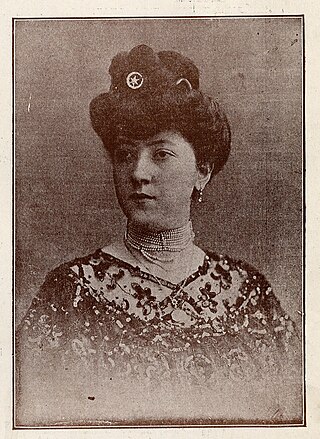
Regina Zuckerberg was an Austrian-born Yiddish theatre actor and Prima donna who had a career both in Europe and the United States.
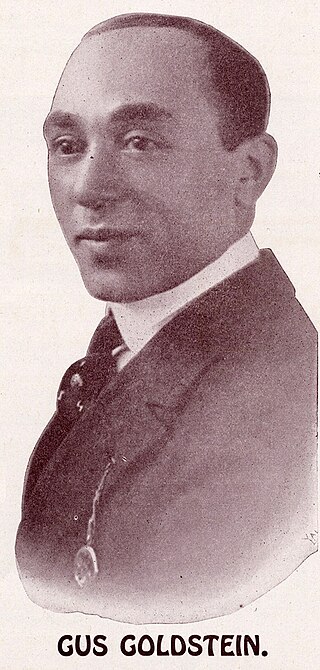
Gustave "Gus" Goldstein was a Romanian-born American Yiddish theatre actor, songwriter, vaudevillian, and recording artist. During the boom in Yiddish music recording in the 1910s and 1920s, he recorded dozens of 78-rpm discs of comedy and theatre music for Victor, Brunswick, Emerson, OKeh, and Columbia Records, collaborating with many celebrities of contemporary Jewish music such as Naftule Brandwein, Abe Schwartz, Louis Gilrod, and Clara Gold.

Clara Gold was an American Yiddish theatre actor and recording artist. She recorded more than twenty Yiddish theatre music and comedy discs between 1917 and 1929, usually with comedic partner Gus Goldstein.














